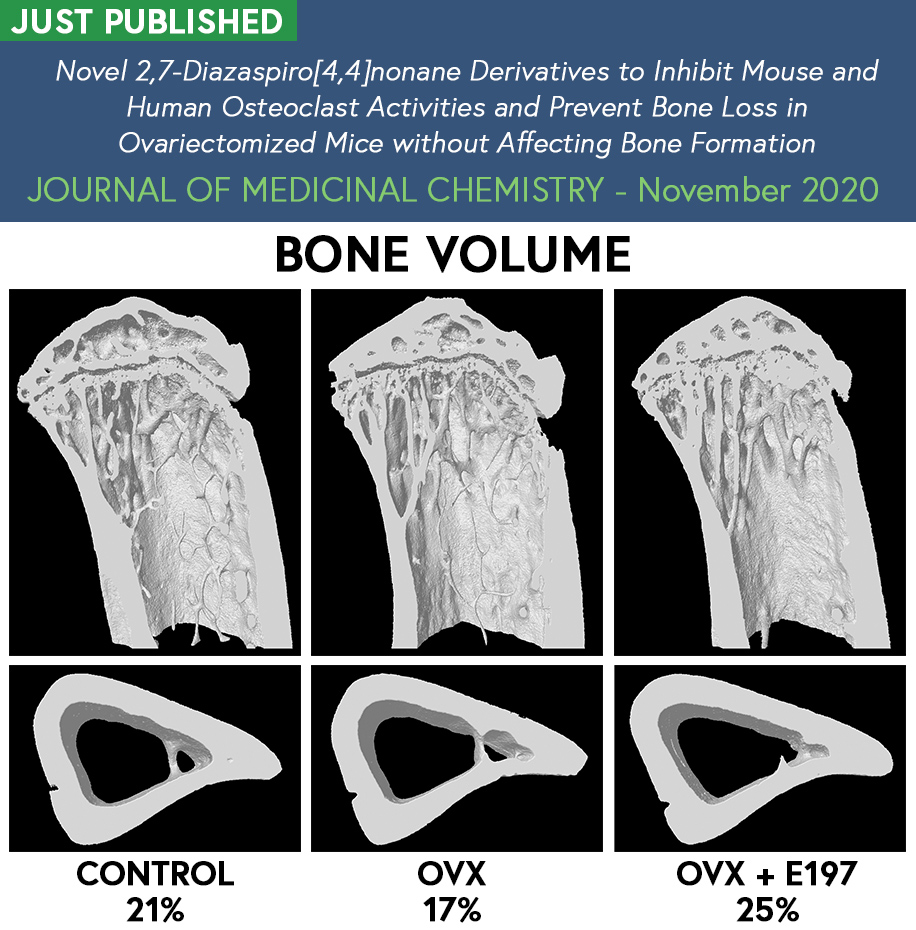A new lead molecule (compound E197) for novel anti-osteoporotic drug has been identified at the Montpellier Cell Biology Research Center (CRBM), University of Montpellier, French National Center for Scientific Research (CNRS), Montpellier, France. The compound E197 inhibits the guanine nucleotide exchange activity of DOCK5, disrupts the organization of podosome belt in osteoclasts, and impairs osteoclastic bone resorption.
Pharmatest has studied the effects of this new lead molecule in the mouse ovariectomy (OVX) model of human postmenopausal osteoporosis. In OVX mice, the compound E197 prevents pathological bone loss without affecting the number of bone resorbing osteoclasts and impairing osteoblastic bone formation. This novel anti-resorptive compound may avoid adverse treatment effects that have been observed with many other anti-resorptive osteoporosis drugs, such as osteonecrosis of the jaw and atypical fractures.
For additional information, please see the following recent publication:
Mounier L, Morel A, Ferrandez Y, Morko J, Vääräniemi J, Gilardone M, Roche D, Cherfils J and Blangy A (2020) Novel 2,7-Diazaspiro[4,4]nonane Derivatives to Inhibit Mouse and Human Osteoclast Activities and Prevent Bone Loss in Ovariectomized Mice without Affecting Bone Formation. J Med Chem. 63 (22): 13680-94.


